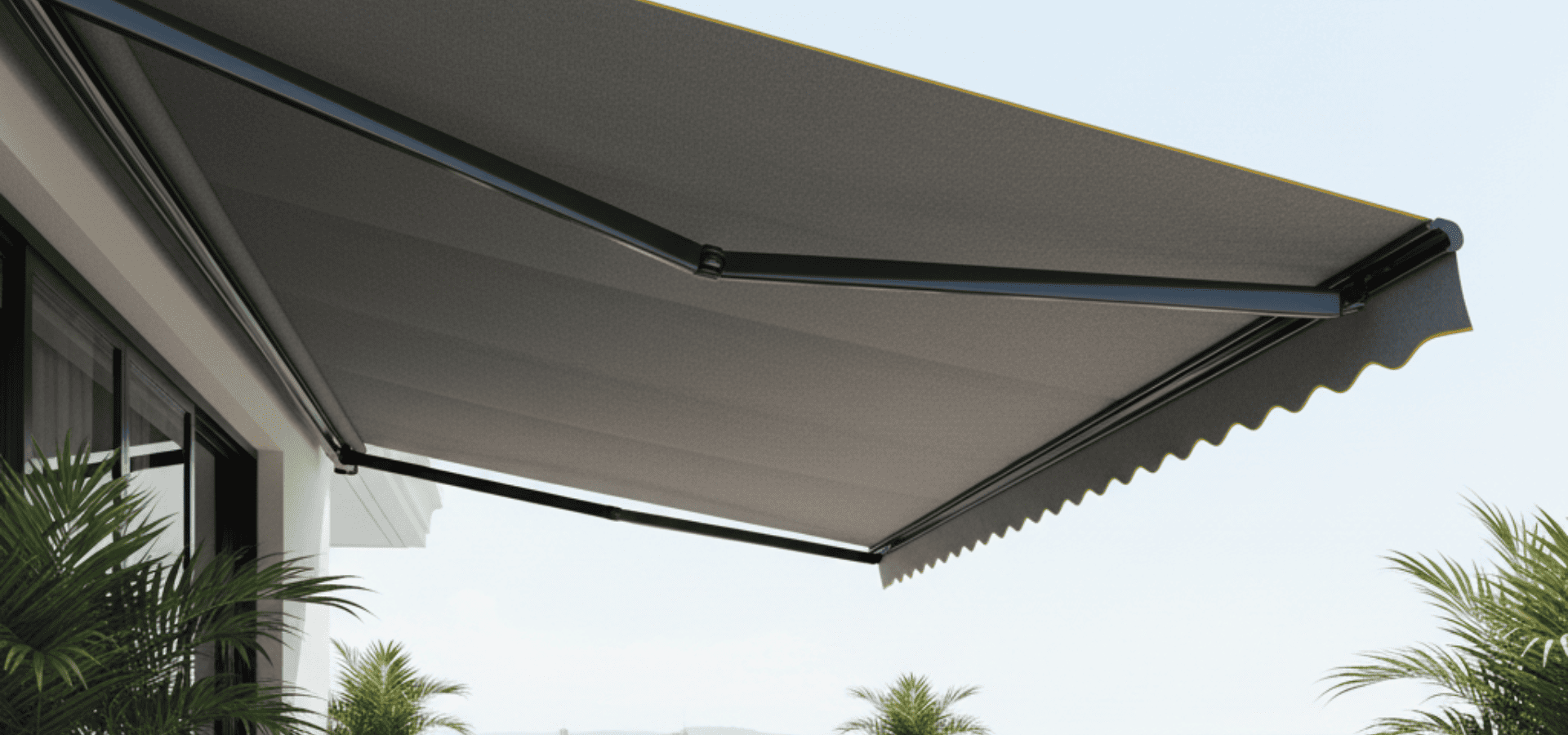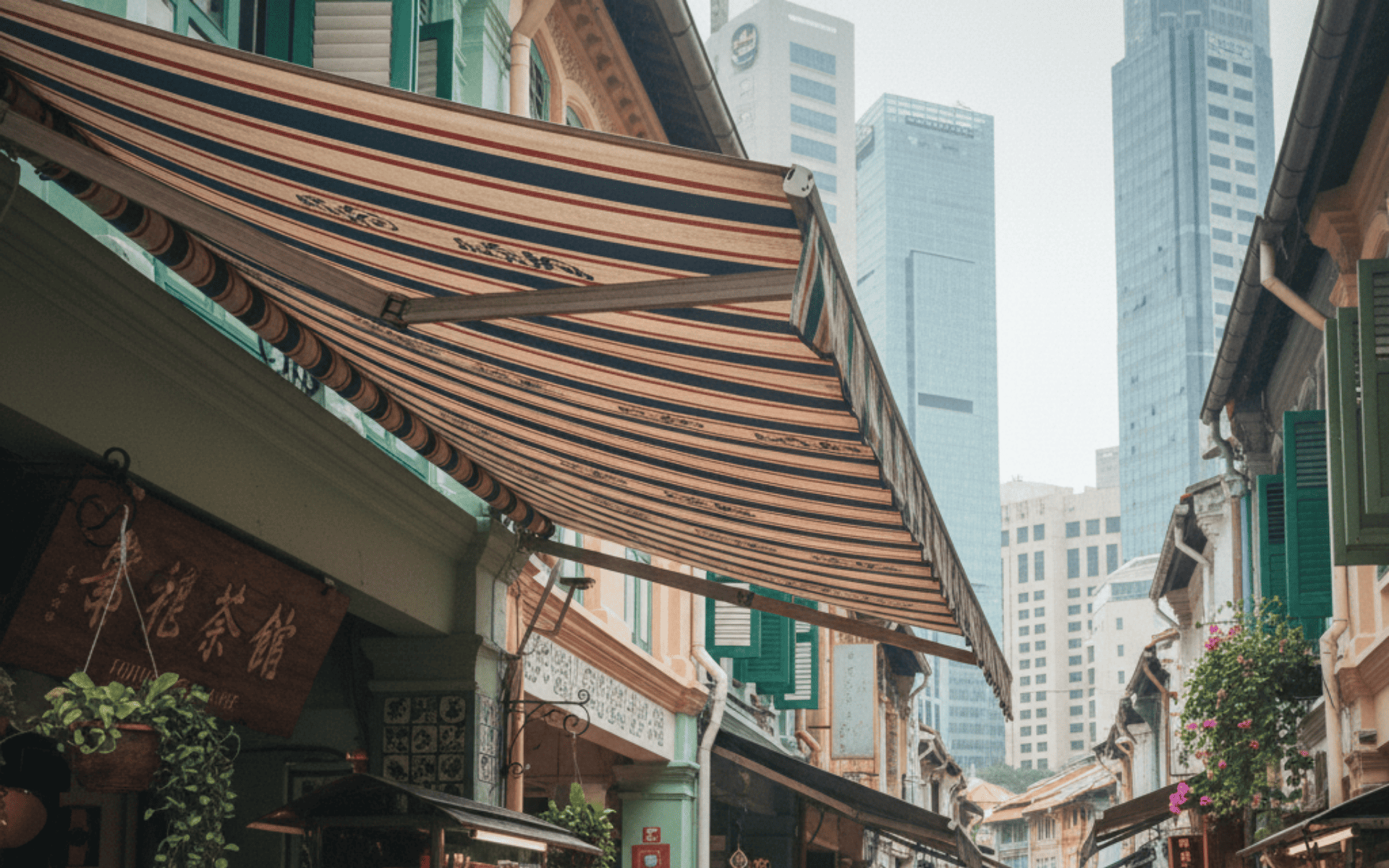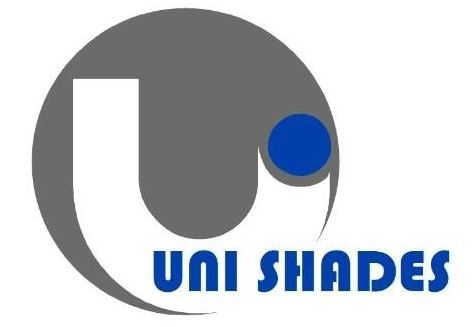How To Choose Sun-Blocking Fabric Awnings in Singapore
Singapore is near the equator, so as all Singaporeans would know, the sun shines relentlessly every day of the year. There’s no winter, no autumn, and no spring, just summer all year round.
This means we never have to worry about freezing cold, but it also means there’s no relief from the glaring sun, no matter which day of the year it is, unless it happens to rain on that particular day.
One way to deal with this is by applying sunscreen to protect your skin from harmful UV rays. But even then, prolonged exposure is still harmful, accelerating skin aging and causing wrinkles and sagging.
And while you can protect yourself to a certain degree, what about your furnishings? Over time, UV rays cause your sofa, flooring, and wood finishes to fade, and there’s no sunscreen that you can just spray over them.
Even putting all these aside, sunlight adds to the sweltering heat, raising your indoor temperatures and increasing your cooling bills.
Taking all these into account, an awning is a smart investment to prolong the longevity of your skin and your indoor furnishings while also helping you save on cooling bills.
Not just any awning will do though. Specifically, you’ll want high-quality retractable awnings that can effectively keep UV rays out.
It’s a common misconception that fabrics block all UV rays because your naked eye doesn’t see any rays passing through. However, in reality, lower-quality, untreated fabrics won’t offer much in the way of UV protection, and the rays will still pass through, reaching you and your furnishings.
Now, you’re probably wondering why we recommend retractable awnings instead of fixed awnings, and that’s a pretty valid question. Here’s why.
Why Opt For Retractable Awnings?
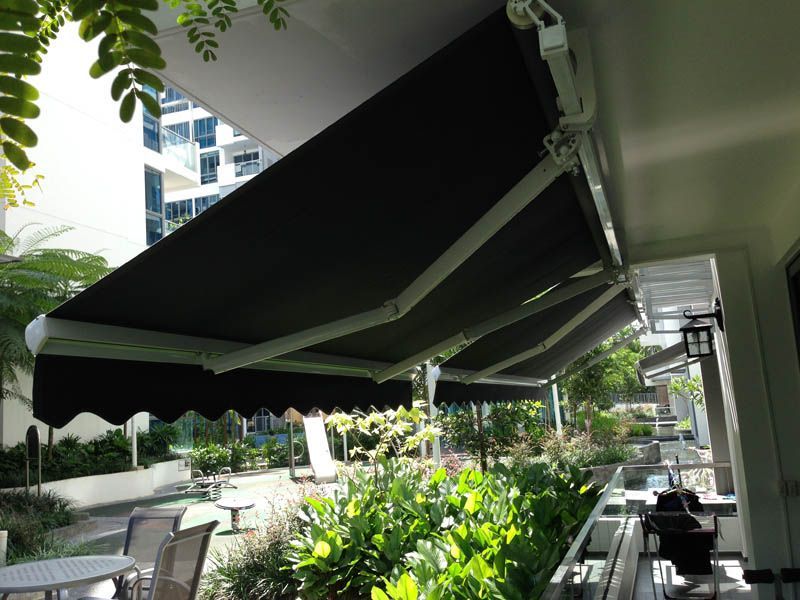
The main benefit of retractable awnings is that they can be retracted when needed.
This is an especially handy feature on more cloudy or even rainy days, when sunlight levels are very comfortable, and you actually want natural light to pass through to light up your space.
On days like those, a stationary awning can’t be retracted and would block what little sunlight there is, making your interior too dim.
Other than that, another reason why people opt for retractable awnings over fixed ones is because when they’re not in use, they can be retracted so as not to disrupt or affect the aesthetics of your home.
Stationary awnings have their advantages too of course. They provide more sturdy protection, and when done right, can look like a very natural part of your home and help enhance its visual appeal.
If you want constant, robust protection, go with fixed awnings. But if your main intent is to block out sunlight as needed, you should stick with retractable awnings.
UV Ratings Explained: UPF vs SPF
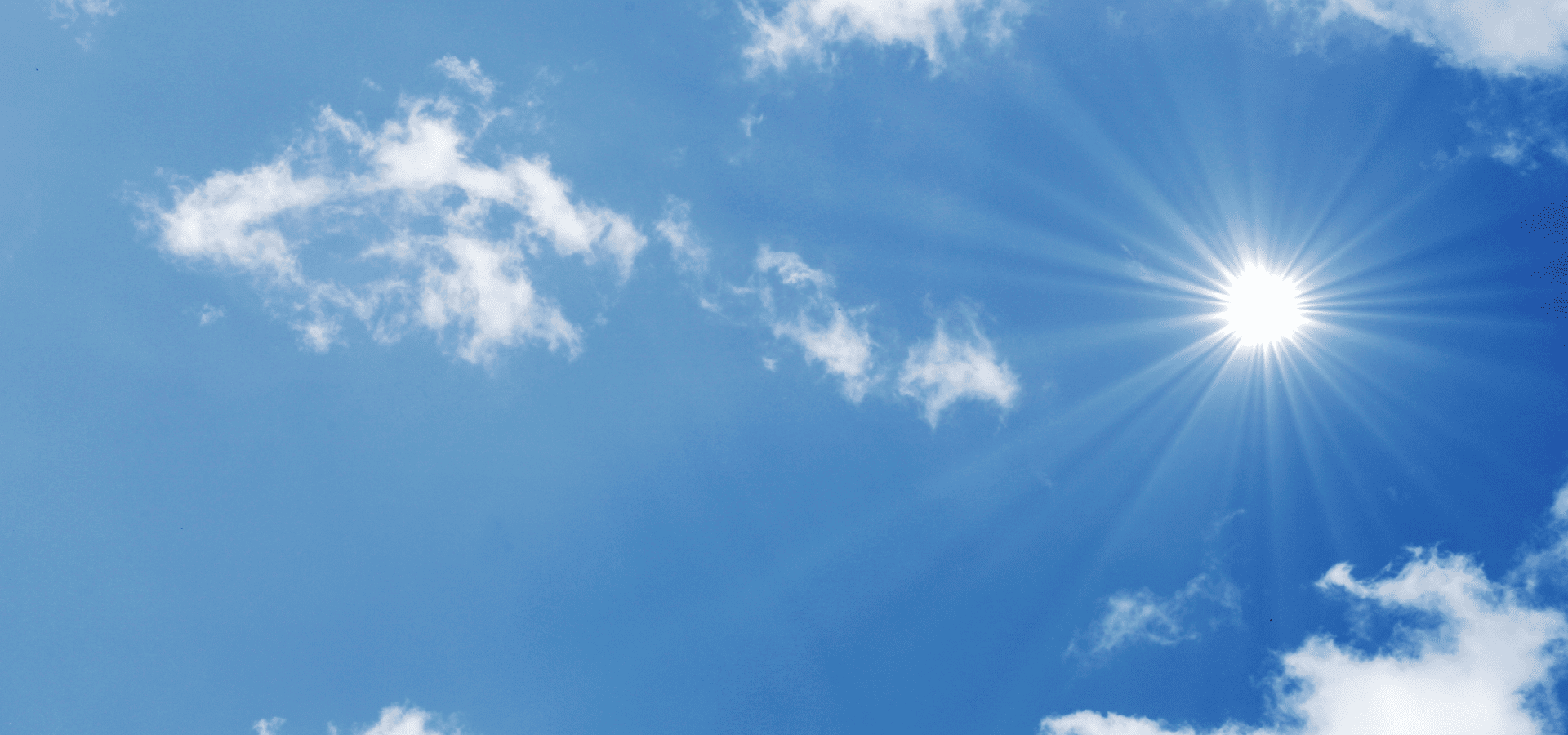
Before we get into which fabrics to use, we need to clear up a common area of confusion — UPF vs SPF.
UPF and SPF are very similar ratings, as they both measure protection against UV rays, but they differ in the type of rays that they cover.
SPF (Sun Protection Factor) is a measure of how long sunscreen can protect your skin against UVB rays and prevent sunburn. UVB rays are rays that burn and affect the outer layer of the skin more, and they’re more strongly linked to skin cancers.
UPF (Ultraviolet Protection Factor) is a specific rating for fabrics that measures protection against both UVA (the rays that cause premature aging, wrinkles, and sunspots) and UVB rays.
Whether it’s SPF or UPF rating, there’ll be a number beside it. If it’s 15, that means it only allows
1/15 (7%) of UV rays to penetrate, and if it’s 50, that means it only allows
1/50 (2%) of UV rays to penetrate. So a fabric labeled as UPF 50 would block 98% of UV rays.
UPF 50+ is the highest rating any fabric can have. There isn’t officially a higher rating than UPF 50+, so you won’t see UPF 80 or UPF 100. Anything that blocks more than 98% of UV rays is simply categorised as UPF 50+, which is higher than UPF 50, but you won’t be able to know exactly how much higher.
When shopping for a retractable awning, look out for fabrics labelled UPF 50+ or UPF 50, since there isn’t a huge difference between the two.
Choosing The Right Fabric For Singapore’s Climate
Moving on to choosing the fabric, we’ll be ranking the choices available to you from highest UPF rating to lowest, i.e. from the best at blocking UV rays to the worst.
But note that this doesn’t mean you should automatically go for the first choice on this list.
UPF rating is just one quality. There are various other qualities to consider when choosing your fabric, such as its durability, breathability, waterproofness, and so on.
UPF 50 and UPF 50+ won’t make a huge difference, but how the fabric performs in areas like durability and waterproofness will.
Furthermore, even if a fabric’s natural untreated state doesn’t block out sun rays well, you can treat it with a UV-resistant coating. So choose wisely according to the various properties of each fabric, not just its UPF rating.
Each fabric has its purpose, and we’ll be breaking down their pros and cons, as well as when to use them, so that you’ll have a clear idea of which one to choose for your intended use.
1. Vinyl-Coated (PVC) Fabrics
Pros:
- Very effective at blocking UV rays (almost 100%)
- Waterproof, durable, and easy to maintain
- Resistant to mould, mildew, and environmental damage
Cons:
- Not too breathable due to the opacity, so heat can be trapped under the awning, increasing the temperature of the area under it
- Limited variety aesthetically, unless you pay more for decorative finishes
Price Range: Mid-range to higher-end
PVC fabrics are the best at blocking UV rays. They’re typically rated UPF 50+, due in part to their opacity.
They’re also tough, waterproof, and easy to maintain. Basically, they perform well in most practical aspects.
The only downside is that PVC fabrics aren’t that breathable and trap heat, so the area underneath can get warm on hot days.
Manufacturers also generally don’t bother making them in various designs, so you’ll find mainly simpler designs like solid colours and matte finishes, unless you pay more for custom designs.
PVC fabrics are best used for areas like carports, patios, or for commercial use, where waterproofing and durability are a must.
2. Acrylic Fabrics
Pros:
- Great UV resistance (typically UPF 50+)
- Superior fade resistance as the colour is infused directly into the fibres
- Durable and long-lasting, often backed by warranties of 5–10 years
- Breathable
Cons:
- Not waterproof, only water-resistant
- Slightly harder to maintain
- Higher upfront cost
Price Range: High-end, the most expensive out of all fabrics
Acrylic fabrics are the cream of the crop. They’re only slightly less UV-resistant than PVC, but they have a longer lifespan and are much more breathable.
The catch is that they’re not fully waterproof, at least not without additional coatings.
However, a waterproof coating would significantly diminish their breathability while also adding extra cost, so it doesn’t make sense. If you were going to coat your acrylic awning and make it less breathable, you might as well get the more affordable PVC awning in the first place.
In Singapore, where heat is always a concern, acrylic fabrics are the fabric of choice for most homeowners when it comes to balconies and windows, as they won’t trap much heat and will help keep your home cool while blocking out harmful UV rays. They also allow for more aesthetic flexibility.
Certain homeowners also use them for patios if they’re fine with water penetrating during heavy downpours.
Acrylic fabrics are slightly harder to clean than PVC, as PVC has a slick surface that no other fabric has, but all it takes is a little more scrubbing and some fabric cleaner to clean your acrylic fabric.
3. High-Density Polyethylene (HDPE) Shade Cloth
Pros:
- Lightweight and very breathable
- Great UV resistance (Higher-quality ones can be UPF 50+)
- Durable and resists UV degradation well
Cons:
- UPF rating can vary widely depending on quality
- Not waterproof and usually not even water-resistant
Price Range: Mid-range, usually just a bit cheaper than PVC
Out of the various fabrics, HDPE shade cloth offers the best breathability and ventilation.
That said, they’re also not waterproof at all, not even water-resistant.
With these in mind, HDPE shade cloth is usually used for spaces where airflow and cooling are top priorities, and keeping water out isn’t too important.
These include garden shades, playgrounds, and poolside shading.
Just make sure to opt for high-quality options, because the UV resistance of HDPE shade cloth directly depends on its quality. If you choose a lower-quality option, it can allow up to 10% of UV rays through, which obviously isn’t ideal.
4. Polyester Fabrics
Pros:
- Relatively affordable
- Decent durability and longevity
- Good UV resistance with the appropriate coatings
Cons:
- Blocks out less UV rays than higher-end options
- Less durable than higher-end options
Price Range: Mid to low-range
If you’re on a budget but still want quality, polyester fabrics are perfect. They can provide decent UV resistance with the right coatings, and are usually rated between UPF 30 and 50+.
They’re also breathable enough to not trap too much heat, especially during hotter days.
Nevertheless, being a budget option, they don’t quite measure up to the other higher-end options above, so you’ll have to replace them more often.
They’re also not waterproof or water-resistant unless you apply the relevant coating, but doing so would also end up affecting their breathability.
In a nutshell, polyester fabrics are a great wallet-friendly short-term solution that can fit most applications as long as you apply the necessary UV or waterproofing coatings for your intended use.
5. Traditional Canvas
Pros:
- Classic appearance
- Breathable
- Good UV resistance with the appropriate coatings (up to UPF 50)
Cons:
- Naturally low UV resistance without additional treatments
- Poor durability and longevity
Price Range: Low-range, generally considered the cheapest option on the market
If polyester fabrics are still out of your budget, then you’ll have to go with traditional canvas.
Traditional canvas is essentially an even less durable version of polyester fabrics. You coat them with the necessary coatings for your intended use, and you’ll have to replace them even more often than with polyester fabrics.
Traditional canvas is either used as a very short-term option or for mainly decorative purposes.
Conclusion: Making Your Decision
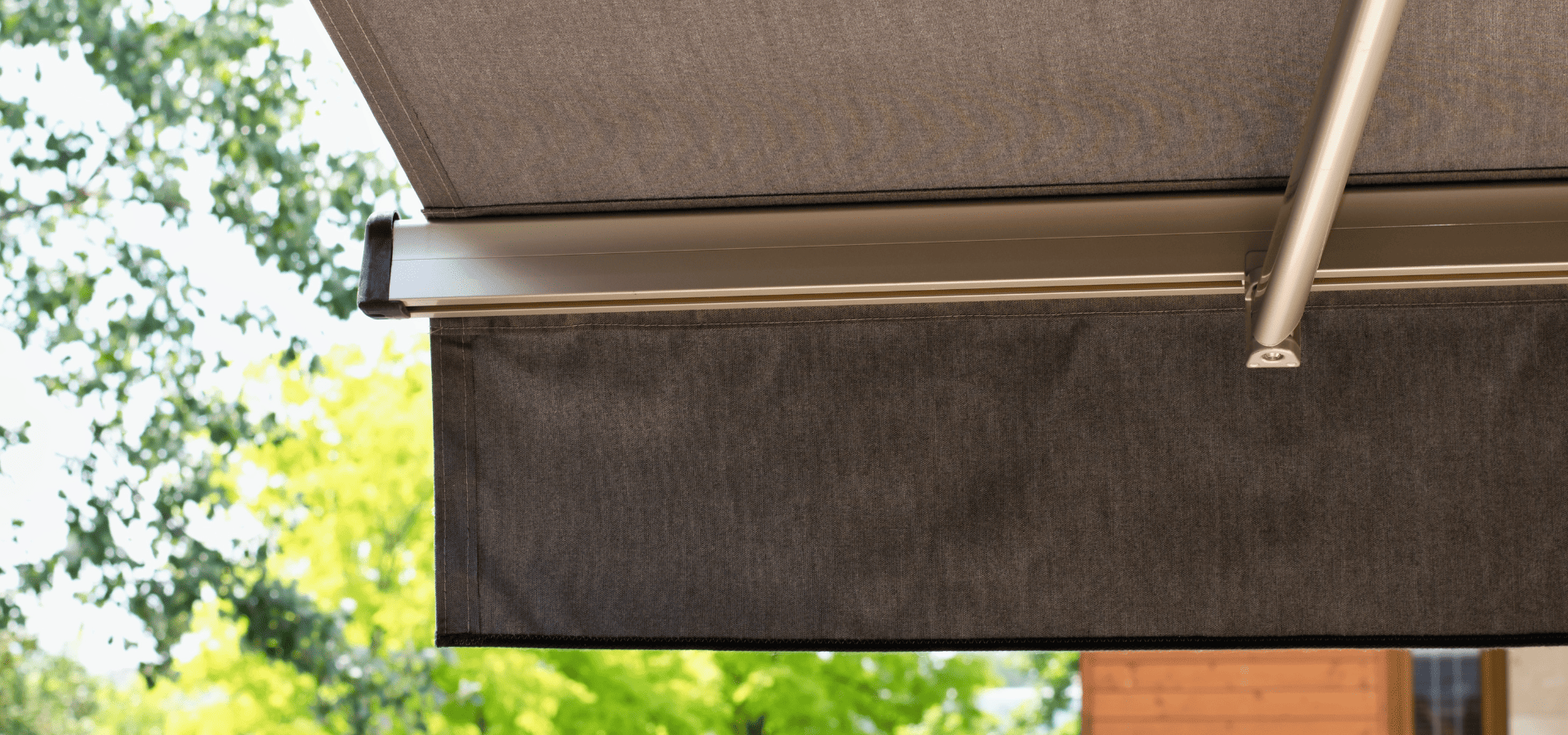
As should be apparent by now, UPF rating matters, but as long as you’re choosing high-quality fabric, your fabric should perform more than adequately in that aspect.
Since UV resistance is a given as long as you’re not getting a budget option, the fabric’s individual properties, such as its breathability and durability, are much more important considerations.
We’ve already provided recommendations on where and when to use each option, so you should have no issue making the right choice for your intended use. Just follow our recommendations and you’ll be quite safe.
If you’re still not sure which one to choose for your property, or you want more personalised recommendations, don’t hesitate to reach out to Uni Shades.
We’ve been
installing awnings in Singapore since 2013, and we’ve installed hundreds of awnings since then. We’ll help you make the right choice and ensure a high-quality, compliant installation.
Give us a call today at 6635 3550
or 9091 0110
and let’s get your project underway!
